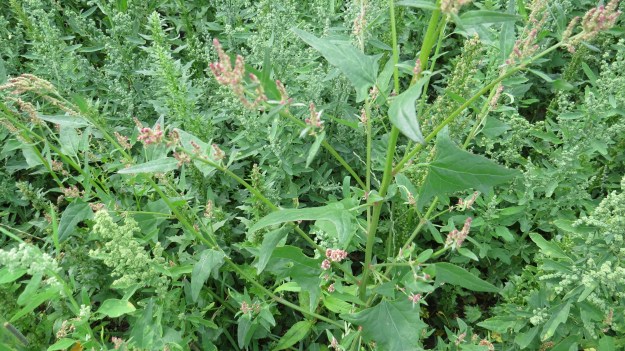Dear Readers, one of the sad things about my half mile territory is that it doesn’t contain any lakes, or indeed any ponds except for the one in my garden. So when the urge to seek out waterfowl takes over, I have to head for Hampstead Heath, which has a fine selection of water bodies (though whether they will be quite as grand when they’ve finished their controversial dam project is anybody’s guess). One of the most dapper and austere of the birds to be found here is the European Coot, a member of the rail family. It is an easy bird to identify, all sooty-black except for that white beak and frontal shield, and is probably most well known for being ‘as bald as a coot’. However, when you actually look at the creature, this doesn’t really make sense. It’s the front of their faces which are white, not the tops of their heads. I am indebted to the Hedgeland Tales website for pointing out that one of the Old English meanings of ‘bald’ was ‘streaked or marked with white’, and this makes much more sense. It may also be that the name of the Bald Eagle was referring to its whiteness, not its lack of hair. Or indeed feathers.
Most other rails, such as the Moorhen and Water Rail, are shy, retiring, good-mannered birds, tip-toeing around as if anxious not to offend. But one look at the glaring red eyes of the coot should tell you that this is a bird of passion. While all is mostly peaceful at this time of year, the Coot is not a bird to be messed with.
 It doesn’t take much to upset a coot.You will often notice them laid out flat in the water, heading towards something on the other side of the pond like a small feathery torpedo. They are extremely territorial birds during the breeding season, and a pair will defend their little patch of water against all comers – dogs, humans, swans, ducks, but most especially other coots. An outbreak of explosive clucks and squawks heralds the onset of hostilities. They fight with wings, beaks, and with their enormous, fascinating feet.
It doesn’t take much to upset a coot.You will often notice them laid out flat in the water, heading towards something on the other side of the pond like a small feathery torpedo. They are extremely territorial birds during the breeding season, and a pair will defend their little patch of water against all comers – dogs, humans, swans, ducks, but most especially other coots. An outbreak of explosive clucks and squawks heralds the onset of hostilities. They fight with wings, beaks, and with their enormous, fascinating feet.
![By Tony Hisgett from Birmingham, UK (Coots 1c Uploaded by Magnus Manske) [CC BY 2.0 (http://creativecommons.org/licenses/by/2.0)], via Wikimedia Commons](https://i0.wp.com/bugwomanlondon.com/wp-content/uploads/2015/08/coots_1c_5371102204.jpg?resize=625%2C391&ssl=1)
By Tony Hisgett from Birmingham, UK (Coots 1c Uploaded by Magnus Manske) [CC BY 2.0 (http://creativecommons.org/licenses/by/2.0)], via Wikimedia Commons
![By Emőke Dénes (WWT London Wetland Centre) [CC BY-SA 2.5 (http://creativecommons.org/licenses/by-sa/2.5)], via Wikimedia Commons](https://i0.wp.com/bugwomanlondon.com/wp-content/uploads/2015/08/fulica_atra_w182.jpg?resize=625%2C469&ssl=1)
By Emőke Dénes (WWT London Wetland Centre) [CC BY-SA 2.5 (http://creativecommons.org/licenses/by-sa/2.5)], via Wikimedia Commons
The Eurasian Coot, however, is doing very well. It has a range which includes the whole of the Old World and Australasia. In the UK, the RSPB estimates that there are approximately 190,000 birds, with 31,000 breeding pairs. And, with a clutch size of up to ten eggs, and a propensity to produce 2 or 3 broods a year, you might think we would soon be wading through an ill-tempered sea of coots, pecking at our ankles and spoiling our shoe polish with their big flappy feet.

Coot feeding chicks (“Sothöns-6”. Licensed under Public Domain via Commons – https://commons.wikimedia.org/wiki/File:Soth%C3%B6ns-6.JPG#/media/File:Soth%C3%B6ns-6.JPG)
However, in the breeding season it seems that everything likes a mouthful of fluffy baby coot. Black-backed and Lesser Black-backed gulls are particularly partial. Pike and heron take a few. The babies drown themselves, get tangled up in angler’s paraphenalia and get themselves lost. But by far the biggest danger to little coots, I regret to say, is other coots. Adult birds will destroy eggs and kill chicks that get too close to their own brood. But unfortunately the sheer pressure of so many babies can also turn their own parents into furies. A chick which begs too much may be pecked on the head by its mother so often that it gives up and dies of starvation. Some may even be killed. Gradually, the brood reduces to a size that the parents can handle, and where there were ten baby coots, there may eventually be only one or two. And in the great scheme of things, this is probably just as well, though you would need a heart much harder than mine not to be upset at the sight of chicks being gradually reduced to hopelessness and eventual death.

The lucky survivors (“Eurasian coots – juveniles with adult” by Taken byfir0002 | flagstaffotos.com.auCanon 20D + Canon 400mm f/5.6 L – Own work. Licensed under GFDL 1.2 via Commons – https://commons.wikimedia.org/wiki/File:Eurasian_coots_-_juveniles_with_adult.jpg#/media/File:Eurasian_coots_-_juveniles_with_adult.jpg)
In spite of all of this, however, I find coots fascinating birds. They are much more outgoing and confident than your average rail (when did you last see a Moorhen fighting a Black-headed Gull for a crust)? Their social dynamics are fascinating, and they have a kind of urban, bustling attitude which means that they punch well above their weight on the average boating lake. Our parks would not be the same without the clinks and plinks of coots arguing amongst themselves. Quieter, yes. But definitely not the same.






































![A fine Red Admiral caterpillar (note the silk at the top left hand corner) (By Lamiot, from Gilles San Martin [CC BY-SA 2.0 (http://creativecommons.org/licenses/by-sa/2.0), GFDL (http://www.gnu.org/copyleft/fdl.html) or CC BY-SA 4.0-3.0-2.5-2.0-1.0 (http://creativecommons.org/licenses/by-sa/4.0-3.0-2.5-2.0-1.0)], via Wikimedia Commons)](https://i0.wp.com/bugwomanlondon.com/wp-content/uploads/2015/08/vanessa_atalanta_larva.jpg?resize=625%2C475&ssl=1)












